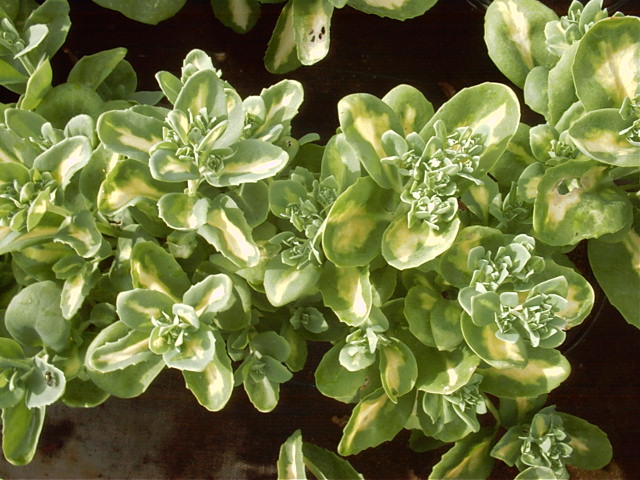| Botanical Name: Sedum sieboldii 'Medio-variegatum' | |
| Common Name: Variegated October Daphne |

-
Anatomy
-
Culture
-
Design
Plant Type
Ground cover, Perennial, Succulent
Height Range
Under 1'
Flower Color
Pink
Flower Season
Summer, Fall
Leaf Color
Blue Green, White, Variegated
Bark Color
n/a
Fruit Color
n/a
Fruit Season
n/a
Sun
Full, Half
Water
Very Low, Low
Growth Rate
Slow
Soil Type
Sandy, Clay, Loam, Rocky
Soil Condition
Average, Poor, Well-drained, Dry
Soil pH
Neutral
Adverse Factors
n/a
Design Styles
English Cottage, Mediterranean, Ranch
Accenting Features
Unusual Foliage
Seasonal Interest
Summer, Fall
Location Uses
Entry, Perennial Border, Parking Strip, Patio, Raised Planter, Walkways
Special Uses
Container, Erosion Control, Mass Planting, Small Spaces, Hanging Baskets
Attracts Wildlife
n/a
Information by: Stephanie Duer
Photographer:
Photographer:
-
Description
-
Notes
'Variegatum' is a deciduous, succulent perennial that forms a dense clump of short, slightly arching stems that are densely packed with rounded, toothed grey blue leaves with creamy margins. In the fall, short spikes of rosy pink, star-like flowers top each stem. Even when it is not in bloom, the plant provides a beautiful foliage effect.
As a group, sedums prefer well-drained soils, including sandy-loam, clay-loam, or rocky soils, as long as it is well drained. In nature, most sedums occur in light shade or partly sunny sites, while a few are also well-adapted to full sun situations. They can tolerate both drought conditions or more frequent watering, but the key is good drainage. Their xeric nature makes sedums popular for use in rock gardens, roof gardens, wall gardens, and living wreaths.